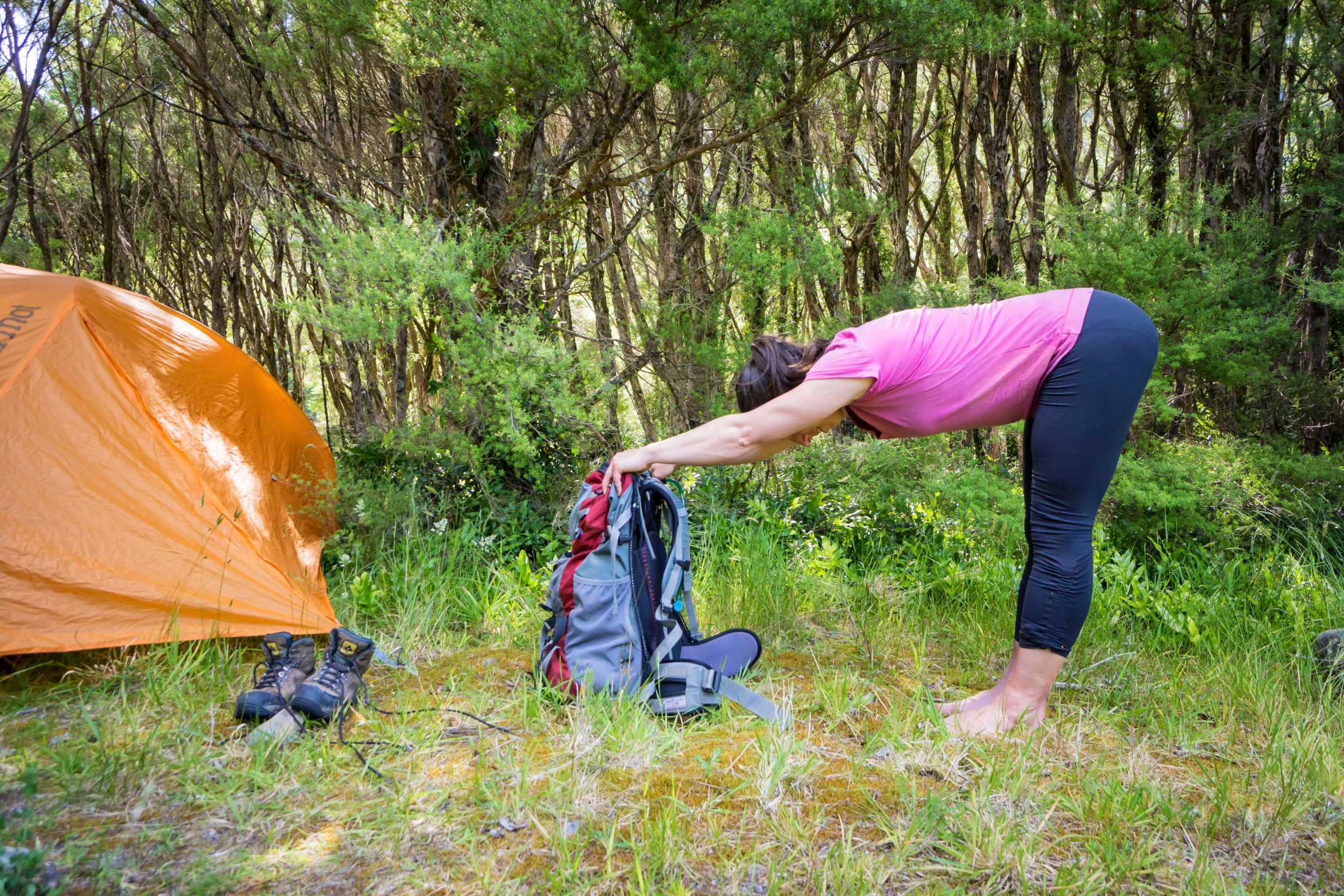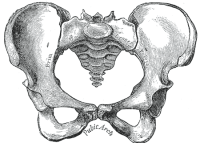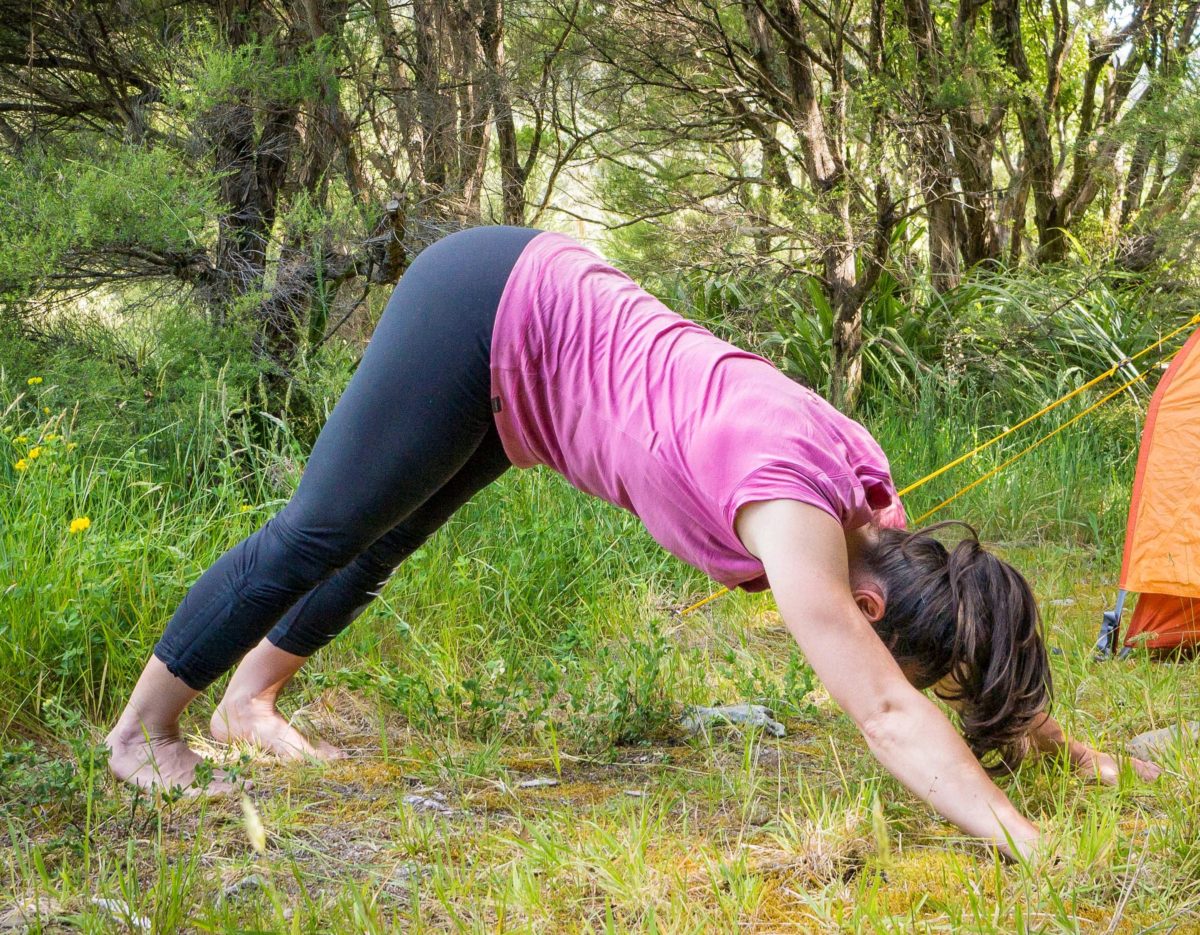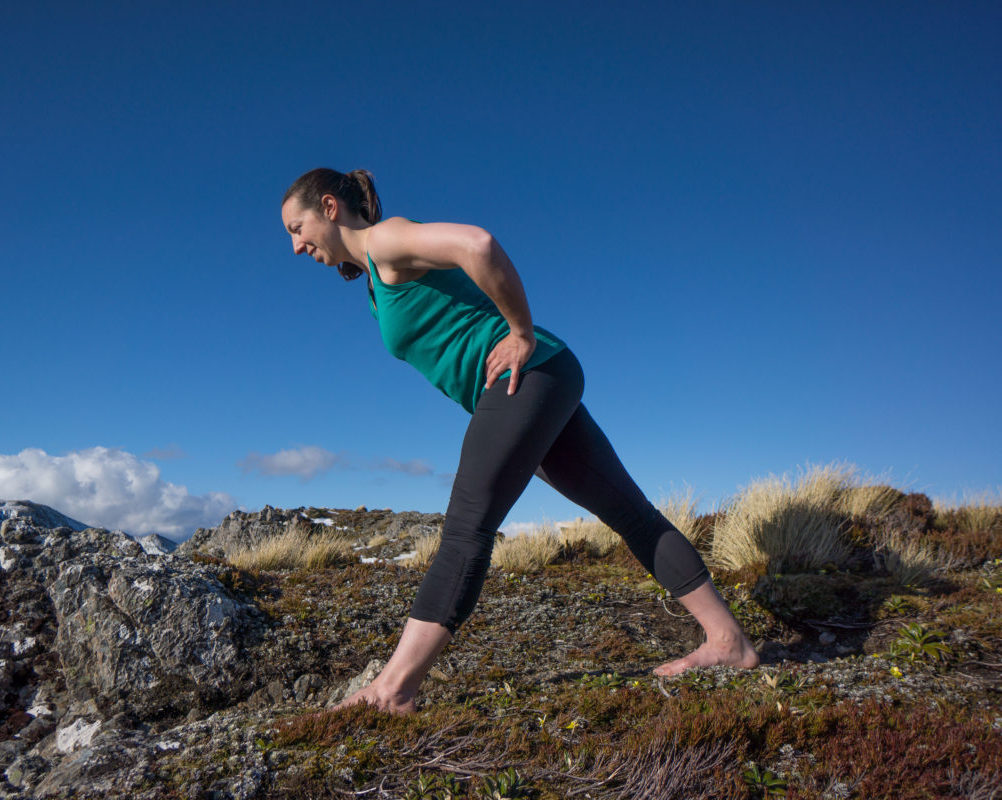At a very simple level, the pelvis is the lower part of your trunk that houses the skeletal (or bone) structure for your hips joints. So it makes sense that the position of your pelvis will affect your hips, legs and back.
Let’s look at this in a particular pose, parsvottanasana. In this pose, if the pelvis isn’t in the right position, you’ll find almost no stretch and may feel back pain. But to find the right position, can be very particular. You might have to try several small adjustments until you find the sweet spot. When you get it right, you should feel a strong stretch in the front leg – either in the back of the thigh, outer hip or buttock (or potentially all 3).
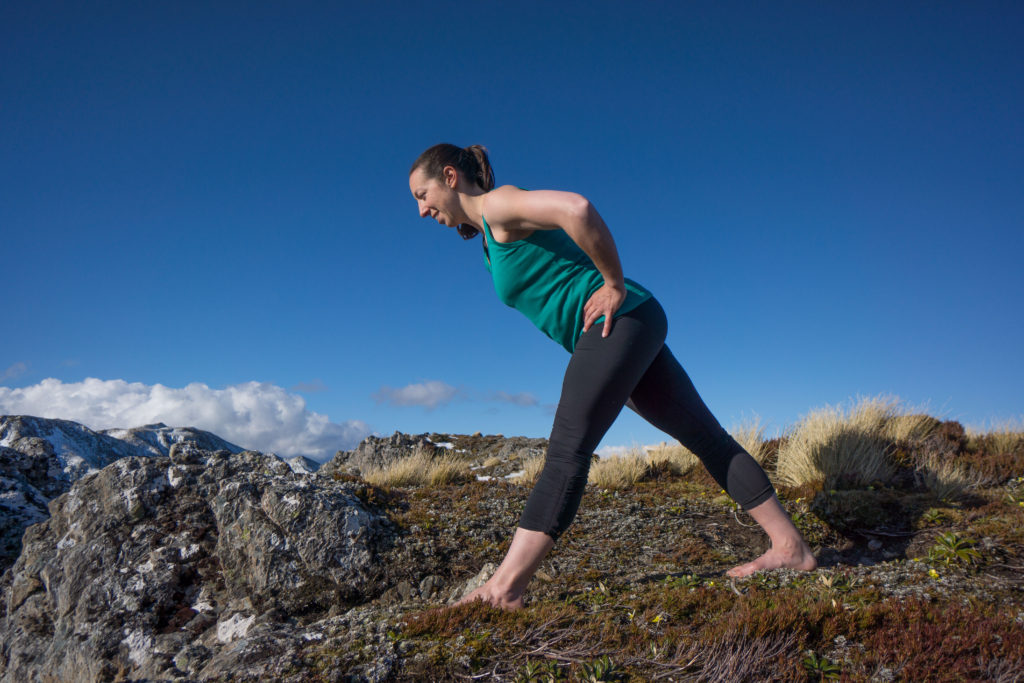
First, set up the pose
- Step your right foot back. Have your feet hip-width apart or think of having them on train tracks.
- Front toes straight ahead. Back toes either slightly turn out or if comfortable straight ahead.
- Both legs straight or nearly straight. Don’t lock your knees.
- Hands on hips. Lift up through your chest.
- Hinge at the hips and tip your chest forward about 1/3 forward or until you find a stretch.
Didn’t find the stretch or want more?
The key is keeping your pelvis and back in a neutral position. That means both hips are facing straight ahead and you should have a slight arch or curve in your lower back. Here are few tips to try to find the right position. Move slow and make small movements. Often the change only needs to be very small and you don’t want to rush into a painful position.
Be sure to keep both knees just a tiny bit bent to protect them while you try these movements:
- With left foot forward, gently pull your left hip back and right hip forward.
- Lift or tip your tailbone up. Or think of sticking your butt out behind you.
- Don’t round your upper back, gently ease your shoulders back opening your chest.
- Don’t round your lower back. Keep a slight arch. But don’t let your belly spill forward, just lightly tighten your abdomen.
- Make sure one hip isn’t higher than the other. Use your hands to feel the position.
- Push your front big toe into the floor.
All of these are small tips to help you find the right position by using your muscles. As you try each one, you might notice a muscle tightening. Those small movements help you move in the correct position and stretch more. In addition, active stretching – using the muscles in the stretch – can be safer. It’s hard to stretch too far when the muscles are active.
So the next time you hear me say, tip your tailbone, you’ll know this has nothing to do with your tailbone! Instead it’s about using muscles to tip your pelvis forward. If you’re curious what my other cues are meant to do, just ask!

